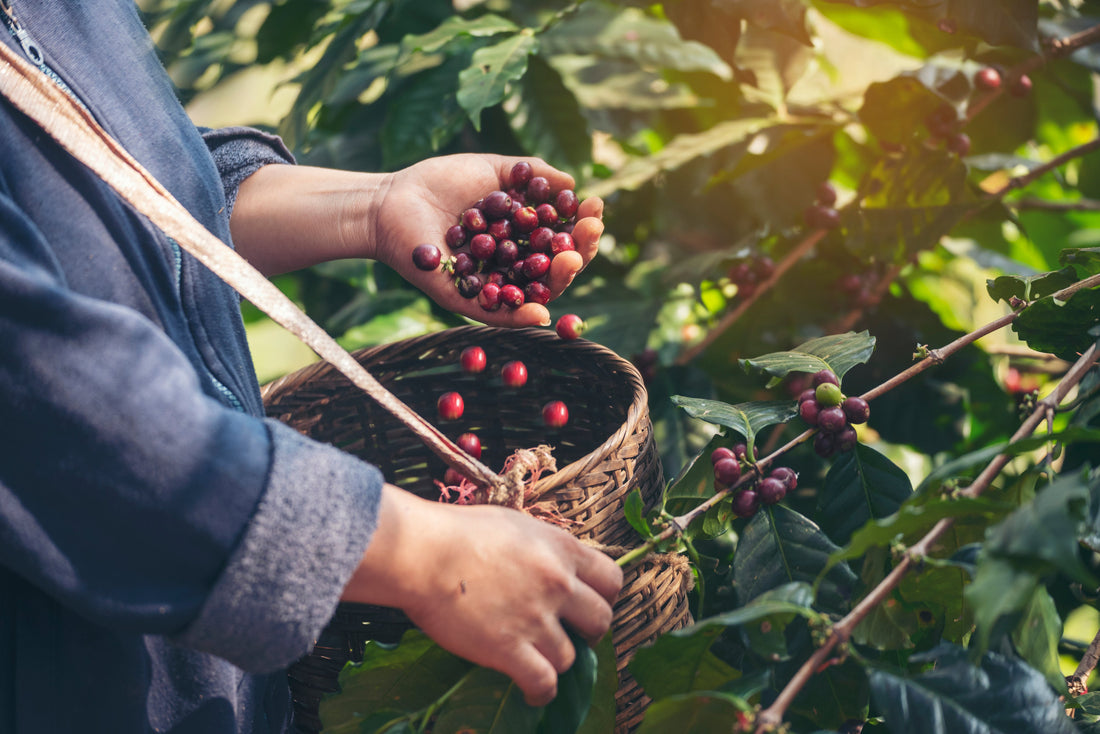Reading material
Characteristics and flavors of coffee produced in different regions

The taste of coffee is greatly influenced by the natural environment of the land where it is grown. The different climates, altitudes, and soils of each producing region create unique flavors. This article aims to introduce the characteristics of each region and the taste of coffee from representative countries, allowing you to enjoy the world of coffee on a deeper level.
Central and South America: Balanced and delicate flavors

Central and South America is known as the center of coffee production, and its stable climate and abundant natural environment contribute to the high quality of the beans. Its coffee has an excellent balance of acidity and sweetness, making it easy to drink and approachable . Its smooth, clear flavor is popular with many people.
Brazil
As the world's largest coffee producer, Brazil has long maintained a balance between quality and stable supply. With vast land area, a warm climate, and mechanized cultivation techniques, large-scale, uniform production is possible.
"Brazilian coffee is characterized by its nutty and chocolate flavor and mellow richness," and "its mild bitterness and acidity make it easy to drink and perfect as a base for blends."
Columbia
Colombian coffee is grown in the highlands nestled in the Andes Mountains, where the perfect balance of rainfall and temperature produces rich flavor. The high quality is also supported by careful hand-picking.
"Colombian coffee has a harmonious taste of fruity acidity, caramel-like sweetness, and a rich flavor." It also has a "clean aftertaste and rich aroma."
Guatemala
The volcanic terrain, large temperature differences between day and night, and abundant rainfall create an ideal environment for growing coffee. Diverse microclimates exist, resulting in different flavor characteristics in each region.
The appeal of Guatemalan coffee is its rich flavor with vibrant acidity and a spicy taste. Its aroma is easily released and it has a full-bodied impression, making it suitable for dark roasting.
Africa: Bright, fruity and unique

Africa is considered the birthplace of coffee, and many beans with a wide variety of flavors are cultivated here. Coffee from Ethiopia and Kenya, in particular, is characterized by its fruity aroma and bright acidity . Its unique character makes it popular as a single-origin coffee.
Ethiopia
The country is considered the birthplace of Arabica coffee, and a huge variety of varieties grow wild here. Each growing region has its own distinctive character, and you can enjoy different flavors depending on whether it is naturally or washed processed.
Ethiopian coffee is characterized by its gorgeous berry and citrus aroma and light tea-like flavor. Its delicate and unique flavor has captivated coffee lovers around the world.
Kenya
Kenyan coffee, grown on plantations at high altitudes, is characterized by its strong acidity and powerful body. Quality is strictly controlled through an auction system, ensuring that only high-quality beans are available on the market.
"Kenyan coffee has a strong, rich flavor with a sour taste reminiscent of black currant or grapefruit," he says. "Its clear mouthfeel and long finish are also appealing."
Asia Pacific: A blend of depth and individuality

Coffee from the Asia-Pacific region is characterized by its rich flavor and spicy aroma, and is particularly suited to dark roasting. Its unique flavor, influenced by the soil and climate, is highly regarded by roasters around the world.
Indonesia (Sumatra)
Coffee is grown on many islands in Indonesia, including Sumatra, and its deep flavor is created through the unique "Sumatran processing" method.
Indonesian coffee is characterized by its herbal and earthy flavor and rich body. You can enjoy its mellow mouthfeel and lingering finish.
Papua New Guinea
Papua New Guinea's coffee is carefully grown at altitudes of over 1,500 meters, and is often grown without the use of chemical fertilizers in a naturally blessed environment.
"Papua New Guinea coffee has a floral aroma, refreshing acidity, and a light, rich flavor," and is characterized by its "clean, balanced taste."
Yemen, the Middle East: A profound taste steeped in history
Yemen, located at the southern tip of the Arabian Peninsula, has long been known as a key point in the coffee trade. In its dry climate, manual terrace farming continues to be practiced to this day.
Yemen
It takes time from harvest to drying, which gives the coffee a complex flavor. Each farm has its own unique character, and you can enjoy different flavors from each lot.
Yemeni coffee is known for its "sweetness reminiscent of dried fruit and complex acidity reminiscent of wine," and is highly acclaimed for its "deep flavor, born from ancient methods and nature."
summary
The flavor of coffee is greatly influenced by the nature and culture of the place where it is produced. Each region has its own unique taste and aroma, offering endless fun in choosing coffee.
Each country has its own unique charm: the mellowness of Brazil, the elegance of Ethiopia, the richness of Indonesia, etc. Each country's coffee has its own story to tell, and learning about the differences will help you develop a deeper attachment to your cup of coffee.
By adding interest and curiosity about the origins of your coffee to your daily coffee, your world of flavors will expand and become richer. Why not find a coffee origin that suits your taste and enjoy a comfortable coffee life?